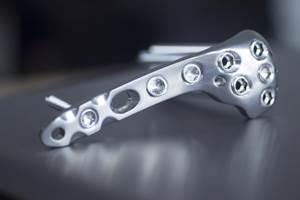Alternatives to Air Sparging Make Better Choices for Tank Agitation
A modest investment in cleaning tank modification to eliminate air sparging can provide significant savings in improved part processing, saving both time and money.
Q: Should I install an air sparging system in my aqueous degreasing tank to reduce my cleaning cycle time?
A: Manufacturers are always looking for ways to reduce cycle times and improve the overall degreasing process. Both goals can be achieved in many cases by optimizing the washing process parameters. Tank agitation is one way to enhance the process. In a stagnant aqueous degreasing tank, a boundary layer with soil-saturated surfactants forms next to the part surface to be cleaned. This boundary layer will eventually carry the soil away from the surface through convection and diffusion, but the rate will be slow. Creating agitation in the tank displaces this layer much faster and allows fresh solution to flow to the part’s surface, which greatly enhances cleaning performance.
BHC recommends tank agitation using eductors in place of air sparging. Under-surface turbulation using eductors is an alternate form of tank agitation and the most effective way to ensure a clean part while reducing processing time and extending bath life. Eductors create mechanical action through a combination of direct impingement and fluid movement of the cleaner solution on the part surface, which improves soil removal and the overall cleaning process. As a best practice, avoid introduction of air, or agitation at the air-liquid interface, which would create all the problems associated with air sparging.
Air sparging is accomplished by pumping air through the cleaning tank, often through a pipe with holes drilled to release air bubbles into the tank.
By introducing air into the tank, several problems may occur:
- Air brings CO2 into the tank, which subsequently forms carbonic acid. This acid reacts with the alkaline components of the aqueous solution, reducing cleaning effectiveness. This can also cause loss of the corrosion inhibitors/inhibition.
- Oil may be introduced into the tank via the input air being contaminated by the compressor or the atmosphere.
- Bubbles are not an effective method of agitation to achieve thorough tank mixing and uneven heating of the solution.
- Only moderate real effect on reducing cleaning cycle times.
- Air or vapor bubbles can form on the underside of some parts when submerged in liquid. Where the surface is in contact with a bubble, contact with the process liquid is inhibited. As a result, no plating/coating/cleaning occurs at those locations.
- The air stream also introduces oxygen into the tank, which could lead to oxidation corrosion (ferrous metals).
- Solids are not kept in suspension as well as for ease of filtration.
The problems caused by air sparging are counter to the expectations of any facility that degreases parts.
Air introduction can cause excessive foaming of detergents designed specifically for soak tank degreasing (without defoaming capability). Foam causes issues in the soak tank and it also will be dragged into the first rinse tank, causing excessive contamination of the rinse water.
The problems caused by air sparging are counter to the expectations of any facility that degreases parts. In short, air sparging:
- Is an inefficient method of agitation
- Damages the integrity of the cleaning solution
- Leads to premature failure of corrosion inhibition
- May prevent cleaning solution from reaching the underside of some parts
- May lead to excessive foaming and excessive drag out of foam into the rinse tank
There are better options for tank agitation that improve on the limitations of a stagnant soak tank without all the drawbacks of air sparging.
Ultrasonics: Sound waves create small bubbles that implode on the part surface, scrubbing debris away. The implosion releases high energy, which creates both heat and power to assist in the scrubbing action. The ultrasonic frequency determines the cleaning power. The use of ultrasonics is highly effective for particulate removal.
Stroke: Up and down movement of the parts within the tank solution. Typically, the parts are racked on a platform that moves the parts through the tank. This action keeps a fresh cleaning solution on the part surface as well as moving solution to keep it well circulated within the tank. Stroke helps to carry soils away from the part surface.
BHC suggests that a modest investment in cleaning tank modification to eliminate air sparging can provide significant savings in improved part processing, saving both time and money.
Request a BHC Health Check of your current system to match the right cleaning chemistry to the needs of your process and to recommend other ways to optimize your process.
About the Author
Related Content
A ‘Clean’ Agenda Offers Unique Presentations in Chicago
The 2024 Parts Cleaning Conference, co-located with the International Manufacturing Technology Show, includes presentations by several speakers who are new to the conference and topics that have not been covered in past editions of this event.
Read MoreKyzen Solvents Provide Ease of Cleaning for Medical Parts
The Metalnox line of solvent products are designed to improve reliability and increase the ease of cleaning in vacuum and vapor degreasing processes.
Read MoreCool Clean’s Omega 1500 Provides Powerful, Portable Cleaning
PMTS 2023: By selecting the appropriate nozzle and making the necessary propellant pressure and temperature adjustments, the Omega 1500 can clean to a variety of surface cleanliness levels.
Read MoreSita’s CleanoSpector Measures Part Cleanliness
PMTS 2023: Handheld measuring device checks for cleanliness of parts to assure product quality as well as prior to follow-up processes.
Read MoreRead Next
Aqueous Cleaning for Aerospace
A turbine manufacturing plant phases out an obsolete vapor degreasing system, making the change to aqueous-based cleaning.
Read MoreAqueous Cleaning Solutions Drive Safety and Profitability
The change to technologically advanced, environmentally friendly cleaning solutions can help contribute to a safer, more sustainable and more profitable workplace.
Read MoreFast Track to Rugged Aqueous Cleaning
A great parts cleaning program is a value-added activity that gives your company a competitive advantage.
Read More










.jpg;maxWidth=300;quality=90)












